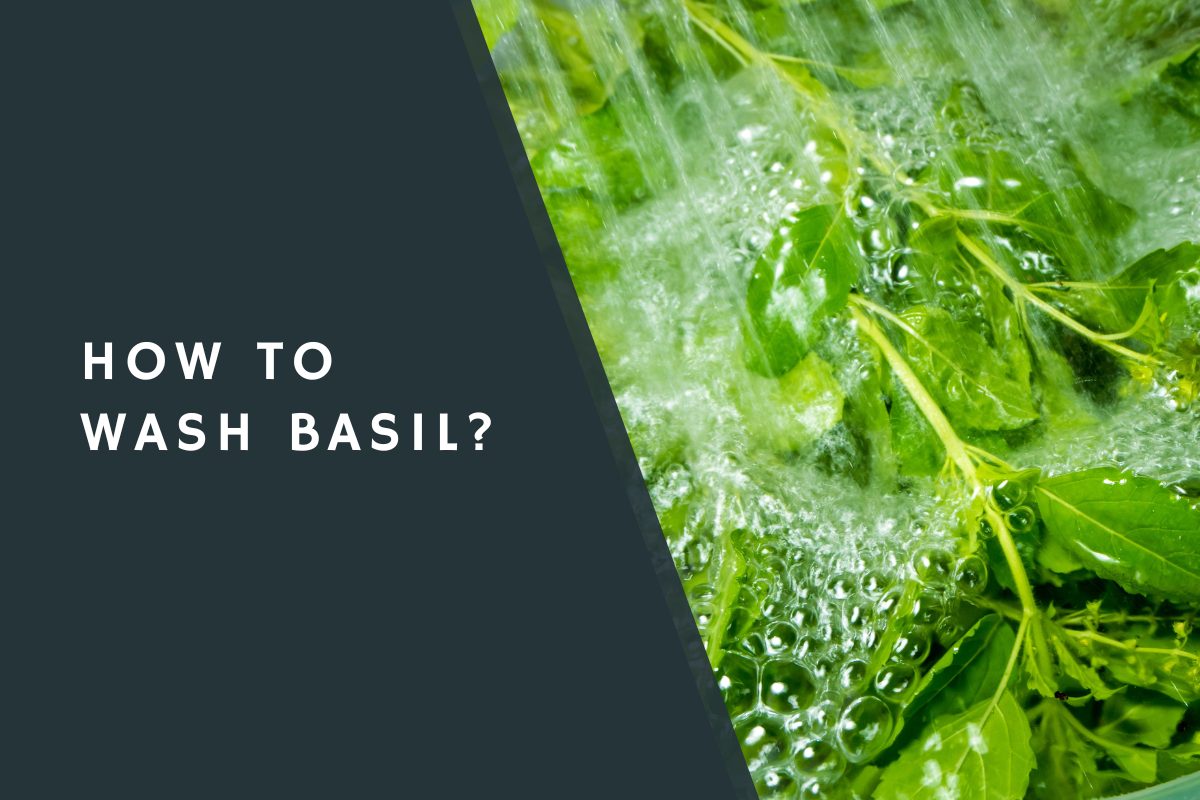Looking for a refreshing and delicious way to boost your health? Look no further than basil juice! Loaded with antioxidants and vitamins, basil juice is a great way to get a nutrient-rich drink that’s both tasty and easy to make.
How to Make Basil Juice?
To make basil juice, first, gather fresh basil leaves and rinse them in cold water. Next, add the basil leaves to a blender along with one cup of water. Blend the mixture until it is a smooth liquid. Once blended, strain the mixture through a fine-mesh strainer or cheesecloth. Discard the solids and pour the liquid into a glass. Enjoy your basil juice!
Read on to find out how to make this tasty beverage in the comfort of your own home.

See Also: How to Make Pesto Without Basil?
How to Make Basil Juice: A Step-by-Step Guide
Basil is a fragrant and flavorful herb that is commonly used in many different cuisines around the world. Its leaves are packed with nutrients and have a variety of potential health benefits, making it a great choice for adding to your diet.
One way to enjoy the benefits of basil is by making basil juice, which is easy to prepare at home with a few simple ingredients. Here is a step-by-step guide on how to make basil juice at home.
Ingredients:
- Fresh basil leaves
- Water
- Honey or other sweeteners (optional)
Equipment:
- Blender or food processor
- Fine mesh strainer or cheesecloth
Step 1: Wash and Dry the Basil Leaves
Before you start making your basil juice, you’ll need to start with fresh, clean basil leaves.
Rinse the leaves thoroughly under cold water to remove any dirt or debris, and then pat them dry with a paper towel or a clean kitchen towel.
Step 2: Blend the Basil and Water
Next, add the basil leaves and a small amount of water to your blender or food processor.
Start with just enough water to cover the leaves, and then gradually add more as needed to help the blender blend the ingredients more smoothly.
Blend the basil and water at high speed until the mixture is smooth and well combined. Depending on the strength of your blender, this process may take a few minutes.
If you’re using a food processor, you may need to scrape down the sides of the bowl a few times to ensure that all of the basil leaves are fully processed.
Step 3: Strain the Basil Juice
Once the basil and water are fully blended, you’ll need to strain the mixture to remove any large pieces of basil that may remain.
To do this, pour the mixture through a fine mesh strainer or cheesecloth and into a clean bowl or container.
If you’re using a fine mesh strainer, you may need to use a spoon or spatula to help push the mixture through the strainer.
If you’re using cheesecloth, gather the corners of the cloth together and squeeze the mixture to extract as much juice as possible.
Step 4: Sweeten the Basil Juice (Optional)
Basil juice on its own has a slightly bitter taste, which some people may find too strong.
If you’d like to sweeten your basil juice, you can add a little honey or other sweeteners of your choice to taste.
Start with a small amount, and then gradually add more until you’ve reached your desired level of sweetness.
Step 5: Serve and Enjoy!
Once your basil juice is prepared, you can serve it immediately or refrigerate it until you’re ready to drink it.
If you’re storing the juice in the refrigerator, be sure to use a clean, airtight container to prevent it from going bad.
Basil juice is best served chilled, so consider refrigerating it for at least an hour or two before serving. You can also add ice to your glass to help keep the juice cold.
To enjoy your basil juice, simply pour it over ice and drink it as is, or add it to a smoothie or other beverage. You can also use it as a base for a refreshing basil cocktail or mocktail.
Tips for Making the Best Basil Juice
Here are a few tips to help you make the best basil juice possible:
- Use fresh basil leaves: Fresh basil leaves will give you the best flavor and nutrients for your basil juice. Avoid using basil that is wilted or yellowing, as this may indicate that the leaves are past their prime and may not have as much flavor or nutritional value.
- Experiment with the amount of water: The amount of water you use when making basil juice can affect the flavor and consistency of the final product. Start with a small amount of water and gradually add more as needed until you achieve the desired consistency.
- Adjust the sweetness to your liking: If you’re not a fan of bitter flavors, you may want to add a little honey or other sweeteners to your basil juice. Just be sure to start with a small amount and gradually add more until you reach your desired level of sweetness.
- Refrigerate leftovers: If you have any leftover basil juice, be sure to store it in the refrigerator in an airtight container. Basil juice will keep for a few days in the fridge, but it’s best to drink it as soon as possible for the freshest flavor.
- Experiment with different flavors: Basil juice can be a great base for a variety of different flavors. Try adding other herbs or fruits to your basil juice to create your own unique blend. Some ideas include mint, lime, or strawberry.
Conclusion
Basil juice is a refreshing and flavorful way to enjoy the many potential health benefits of this aromatic herb.
With just a few simple ingredients and a blender or food processor, you can easily make basil juice at home in just a few steps.
Whether you enjoy it on its own or add it to your favorite smoothie or cocktail, basil juice is a delicious and healthy addition to your diet.
I am an accomplished tech writer with a passion for simplifying complex technology concepts. With a background in Tech, James has dedicated their career to making the intricacies of the digital world accessible to a broad audience.








